
Despite the fact that the big three US market indexes ended in positive territory overnight, this is the big question for investors right now: just how bad is this banking crisis? The really interesting omen has to be the behaviour of central banks, which have been raising interest rates this week. This is my most important question before I dive in to buy some beaten up stocks for the long term, in a week when a so-called rescued US bank, New Republic, lost 34%!
The waters got even muddier when the huge German financial business, Deutsche Bank, was down over 8%, when its credit default swaps spiked for no apparent reason.
This lingering black cloud banking crisis has put the European banking industry in the spotlight, after Swiss regulators forced a UBS acquisition of rival Credit Suisse.
Larry McDonald, founder of the Bear Traps Report, shared a market view on CNBC that has been around for some time: “The Silicon Valley Bank problem brought more attention on banks, and so banks like Credit Suisse and Deutsche Bank that have been horribly horribly managed for decades — and we’re talking about really poor management and horrible decisions — all of a sudden, investors around the planet, focus on that.”
Now that’s an opinion clearly not shared by those who invest with Deutsche Bank, but there were big name financial institutions who have worn losses trusting Credit Suisse!
On the positive side, the European Central Bank President Christine Lagarde argues that euro zone banks are resilient, with strong capital and liquidity positions. Lagarde said the ECB could provide liquidity if needed.
The summary is this: banks don’t need liquidity if there are runs on them but they’ll get it if they need it. But I’ve left out a really important point, which is critical if you want to invest: do we trust the assessments of central bankers?
Many of them, including our own Dr Phil Lowe, told us rates wouldn’t rise until 2024, and the Fed’s Jerome Powell was beating a similar drum in the US, even if he didn’t pin himself down to 2024. Now these central bankers have raised interest rates this week but at least our good doctor, allegedly, is close to a pause for Tuesday week’s RBA interest rate decision.
In case you missed it, the Fed, the Bank of England, the Swiss National Bank and the equivalents in Norway, the Philippines and Taiwan, all raised interest rates.
Shane Oliver took the same line of inquiry as me in saying: “The Fed tightening is unprecedented for a financial crisis. It does seem like central banks are determined to show that they have financial stability measures to deal with financial stability issues and so monetary policy is still free to deal with inflation.”
Or in less economist-like terms, which I have mastered over the decades, — central banks must think the banking crisis is small beer and manageable or else they’re idiots raising interest rates!
You see, if a real banking crisis is just around the corner, then there will be a collapse of demand, jobs and profits, as well as stock prices. And inflation will be burnt out of economies.
However, if, in the whole scheme of things, the potential bank problem is manageable, then central bankers are within their rights to still try to kill inflation with the blunt instrument called monetary policy.
They better be right or the world will pillory them as prized nincompoops. It’s why I’m watching this banking crisis play out. I hope the word ‘crises has been overplayed, because if it’s not, then we could see a significant leg down for stocks.
By the way, there was good news over the week, with the Fed only raising by 0.25% not 0.5%, and the hint that rate rises would soon end was good to hear, as it says something about the central bank’s view on falling inflation.
Against the Fed’s better messaging, Treasury Secretary Yellen stupidly provided conflicting messages about protection for bank deposits over $US250,000, which wasn’t helped by the wording she used. To offset this, “…on Thursday, Treasury Secretary Janet Yellen said regulators are prepared to take more action if needed to stabilize U.S. banks. Her comments are the latest among regulators attempting to buoy confidence in the U.S. banking system,” CNBC reported.
Shane Oliver is right in concluding: “The risk of further contagion remains high in the short term, particularly as rate hikes and last year’s surge in bond yields continues to feed through to other sectors of the economy. For example, office property is particularly vulnerable to the negative valuation impact of higher bond yields and reduced space demand from “work from home”, which in turn will have an impact on banks.”
On the plus side, Oliver says: “The situation is nowhere near the broad-based bank asset problems that gave rise to the GFC (at least not yet).”
Of course, all these banking challenges threaten global economic growth down the track, and it’s no surprise that commodity prices, such as iron ore, have been falling while the gold price is spiking.
To the local story and that ‘bad bank’ cloud hung over our market this week, with the S&P/ASX 200 down 39.1 points (or 0.56%) for the week to finish at 6955.20, with Afterpay/Block the big dropper for the week and iron ore prices sliding. But BHP helped its share price rise 0.6% for the week to $43.64 on promises to cut costs.
This is what mining.com had to say about iron ore prices: “Iron ore prices extended losses on Wednesday, with demand prospects temporarily weighed down by China considering cutting its crude steel output by around 2.5%. The target was proposed by policymakers at a meeting last week but it has not yet been finalized, said sources familiar with the matter.”
The AFR covered the Afterpay/Block share price slump and it looks like short sellers are up to their old tricks: “Block shares plunged 18.4 per cent to $88.94 per share. It comes as the fintech giant said it will explore legal action against Hindenburg Research after the short seller issued a report alleging the payments company facilitated fraudsters.”
If they’re right, they are providing a community service, but if they are using bad news to make money, they should be bankrupted out of business, as they cruel ordinary retail investors with their corrupt antics.
The big rise in Estia Health’s share price follows a Bain Capital bid of $3 a share to take the company, which is a 28.2% better price than prevailed on the market on Thursday.
Here are the big winners and losers for the week.
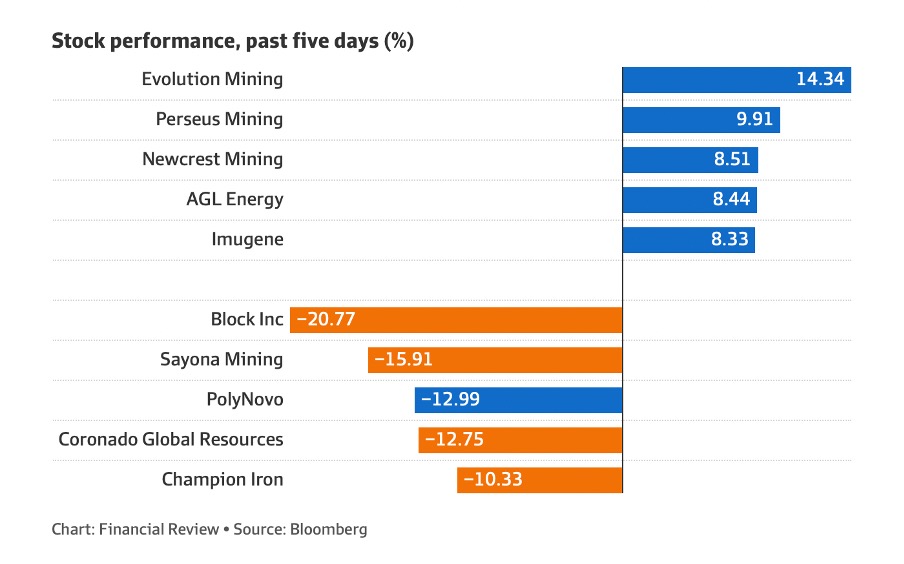
One thing is clear that this bank crisis is helping the gold price. The gold surged as high as $US2009.59 an ounce during the week, which was just less than its record of $US2075.47, which we saw in the Coronavirus crash of stocks in 2020. This chart shows how gold works in a crisis, especially a banking one. But be careful of going long gold now, as any reduction in fear will hit the price of gold.
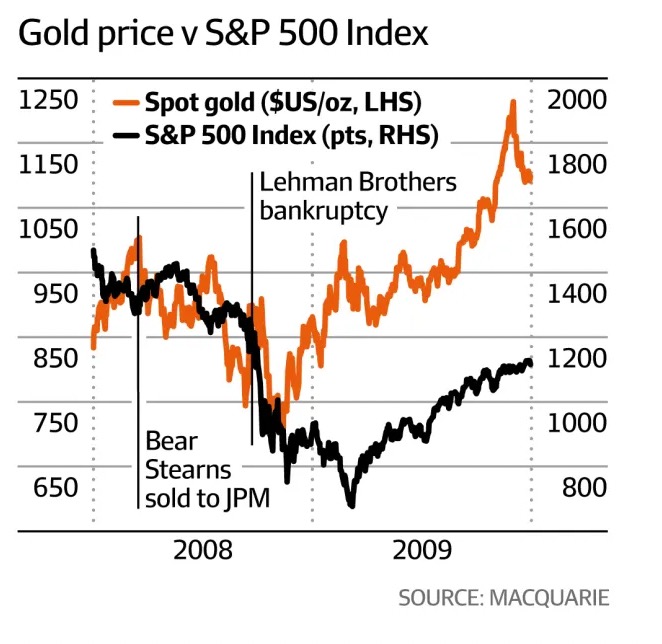
What I liked
- Australian business conditions PMIs for March showed a renewed fall to a soft reading of 48.1, led by weaker services sector conditions and weakness in new orders and employment. This is good for lower inflation and fewer interest rate rises.
- CommSec’s Craig James said: “Recent communication from the RBA strongly hints that the Board would like to pause in their tightening cycle at the April meeting if the upcoming retail trade and inflation data provides evidence that demand is sufficiently cooling in the economy.”
- The Bank of England and Norway’s Norges Bank both hiked 25 basis points, while the Swiss National Bank hiked rates by 50 basis points.I hope this means that these central banks know there isn’t a banking crisis. If there is, a lot of central bankers need sacking!
- US Treasury Secretary, Janet Yellen, noted that regulators “would be prepared to take additional actions if warranted” to protect depositors.
- The Philadelphia regional non-manufacturing survey showed a sharp fall in wages and inflation pressures in the services sector.
What I didn’t like
- Lately there has been increasing talk of a slump in unlisted non-residential properties of 20% or so. Commercial property benefitted like other assets from the search for yield, as interest rates and bond yields plunged in the decades into the pandemic, providing a positive valuation effect.
- UK inflation surprisingly rose to 10.4% year-on-year in February, with core inflation at 6.6%, partly explaining the further rate hike from the Bank of England in the last week.
How am I playing this?
For me, I’m gambling that the central banks will prevent a serious banking crisis and that rate rises are near their end. I’ll be looking for opportunities, but not yet. I need more assurances that this banking challenge is not a crisis. But pessimism is often the forerunner to a big bull market.
The Switzer offerings of the week
- Switzer TV: https://switzer.com.au/the-experts/switzer-tv/stocks-to-buy-in-a-bank-crisis-macquarie-xero-champion-and-more-plus-what-to-dump/
- Boom Doom Zoom: https://switzerreport.com.au/video/boom-doom-zoom-23rd-march-2023/
- https://switzer.com.au/the-experts/peter-switzer/how-i-pick-the-next-nsw-premier-is-like-going-to-the-races/
- https://switzer.com.au/the-experts/peter-switzer/rates-rise-again-in-the-us-and-stocks-slump/
- https://switzer.com.au/the-experts/peter-switzer/ex-students-will-join-fixed-home-loan-borrowers-going-over-the-cliff-mid-year/
- https://switzer.com.au/the-experts/peter-switzer/the-cost-of-retiring-is-50000-dearer-whats-your-plan/
- https://switzer.com.au/the-experts/peter-switzer/will-the-banking-crisis-slug-stocks-again-this-week/
Top Stocks – how they fared
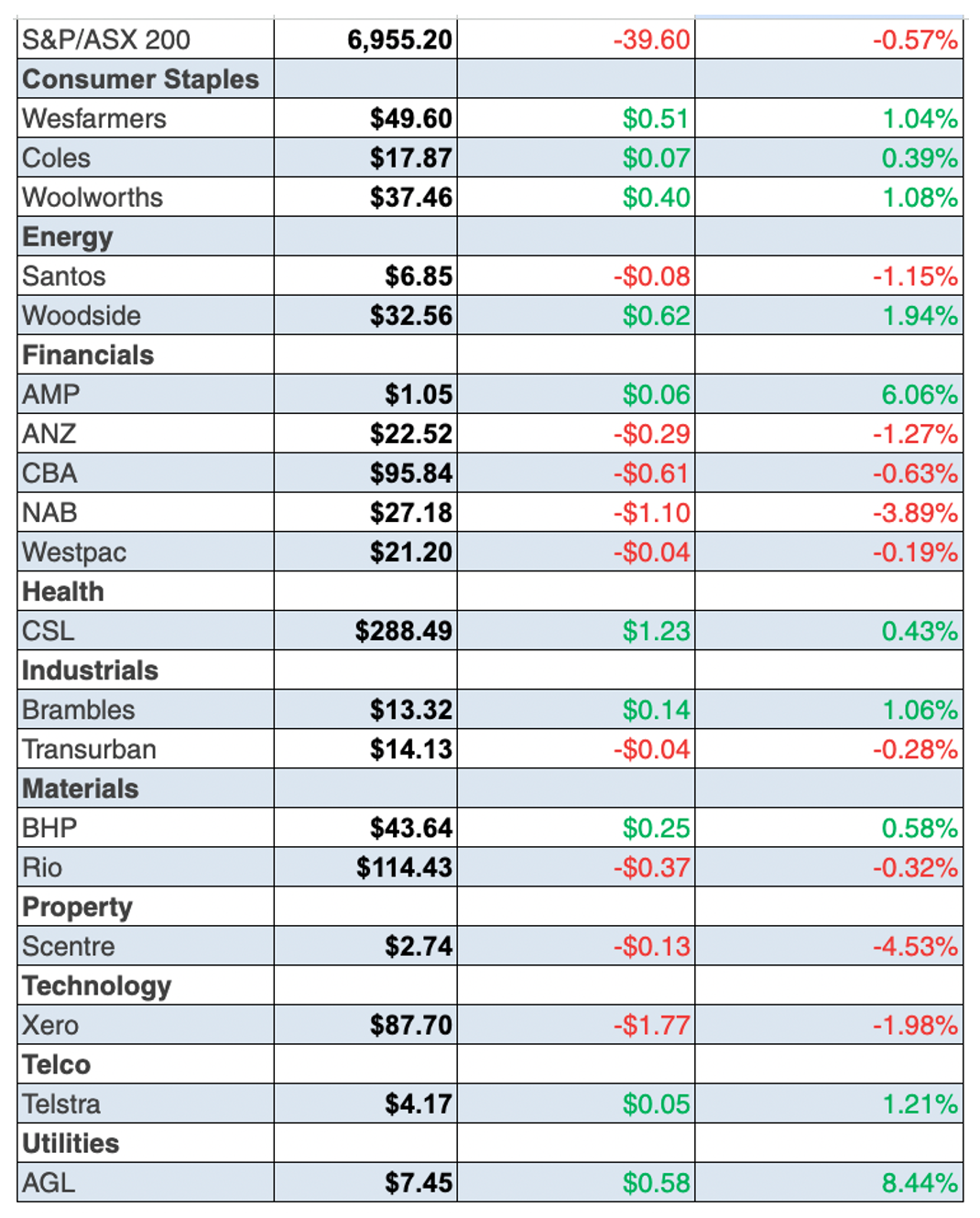
The Week Ahead:
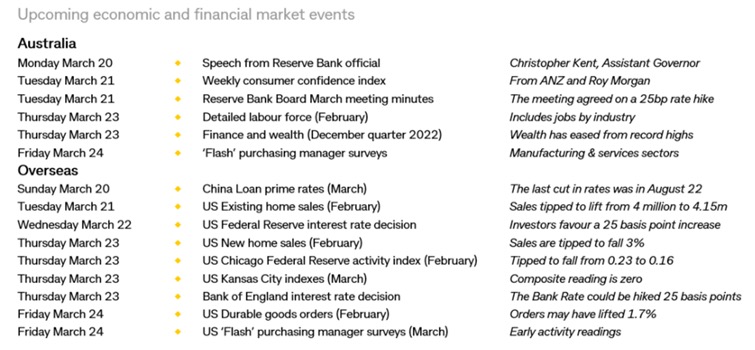
Stocks shorted
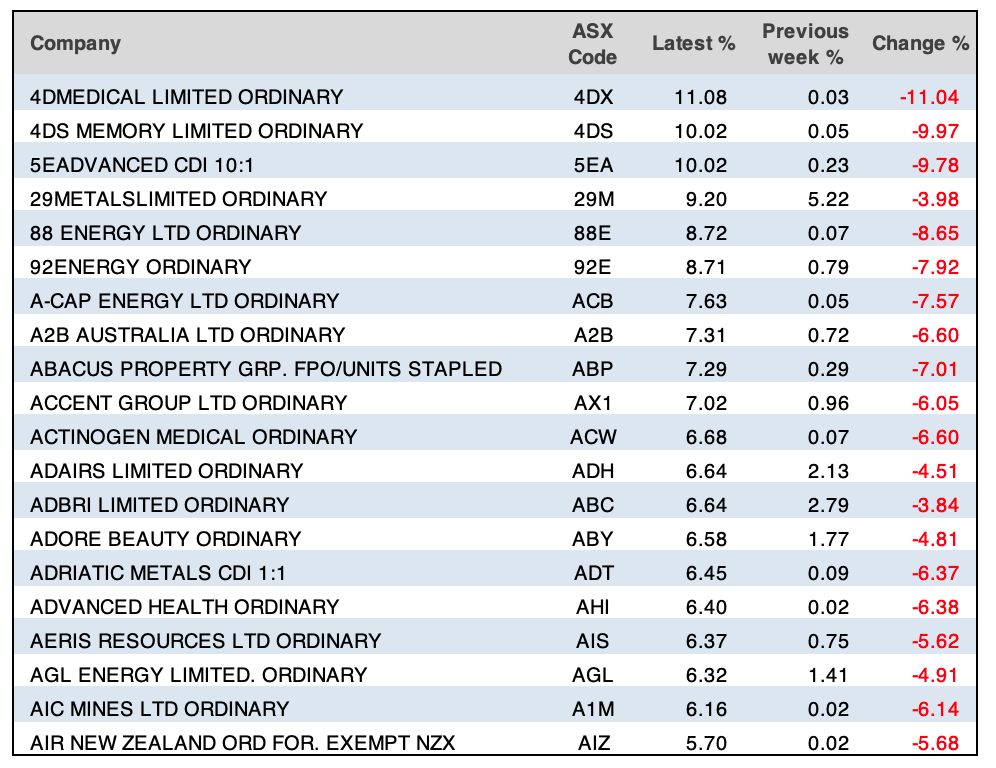
Quote of the Week
“Bull markets are born on pessimism, grown on skepticism, mature on optimism, and die on euphoria.” Sir John Templeton.
Important: This content has been prepared without taking account of the objectives, financial situation or needs of any particular individual. It does not constitute formal advice. Consider the appropriateness of the information in regards to your circumstances.

